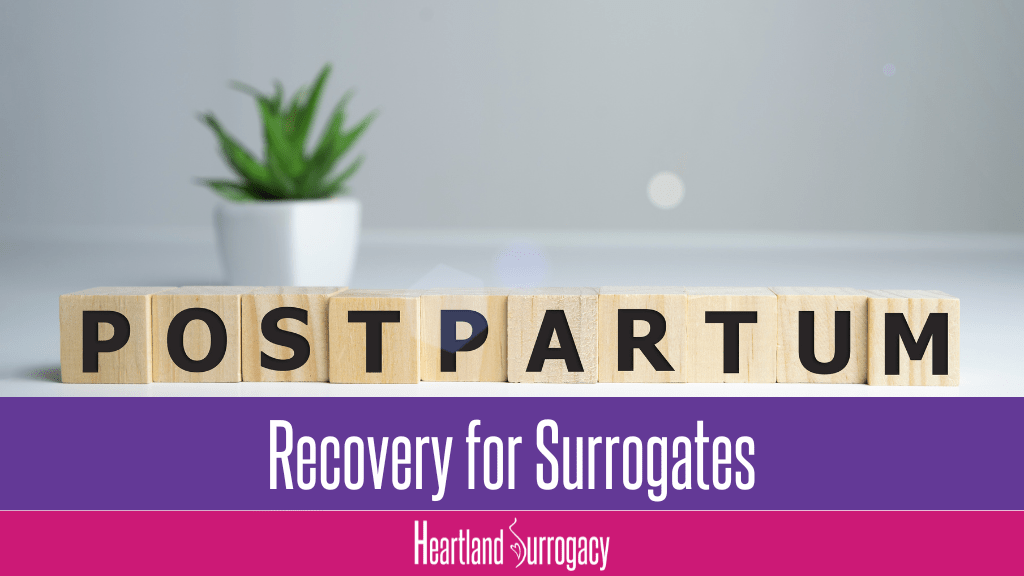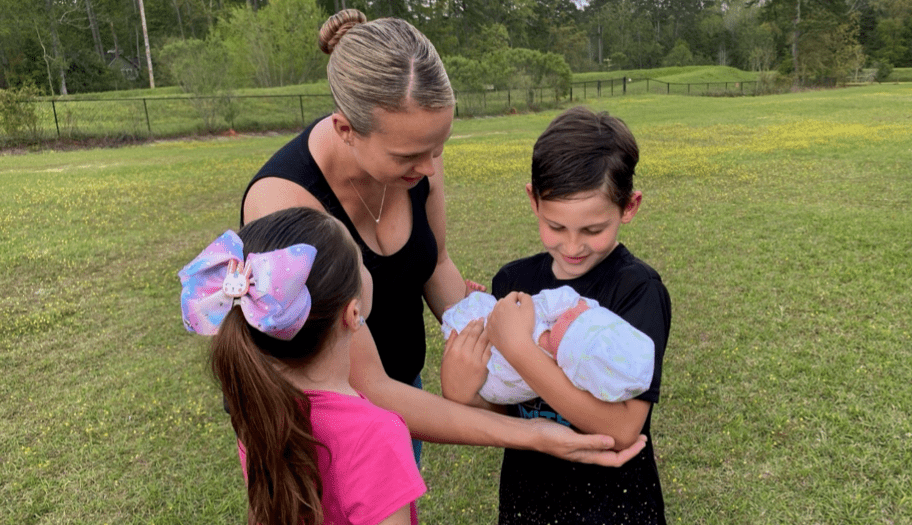Postpartum Recovery Tips For Surrogates
Surrogates recovering postpartum often face a unique set of challenges and adjustments. Physically, they may experience typical postpartum symptoms such as fatigue, healing from delivery, and hormonal shifts. Emotionally, they might navigate complex feelings as they transition from carrying a child for others to their everyday family life. Support from healthcare professionals, counseling, and a strong network of friends and family can be vital in this period, helping surrogates manage their recovery while honoring their well-being and the profound experience they’ve just been through.

Congratulations, you’ve delivered the baby! Now your surrogacy journey is over. But, not really.You’re just now entering the “4th trimester” which consists of your surrogate postpartum recovery. While you’ve made it past a major hurdle, the surrogate delivery, you still have some important things to consider. We’ve put together a top 5 list of important topics to think about to make your surrogate postpartum recovery as smooth as possible.
Stacy is a wife, mother of two, and two-time surrogate. She works full-time in the Association Industry and has a passion for cultivating positivity by sharing her gestational surrogacy story.
Milk Supply
One physical byproduct that will make itself known quickly after a surrogate delivery is your milk supply. What does a surrogate do once their milk comes in? Well, you have a few options.
Pump for a Baby
Some intended parents are interested in providing their baby with breastmilk. You can arrange the details with them about pumping and delivering the breastmilk. The intended parents will pay for supplies, shipment if applicable, and compensation for your time and efforts. If your intended parents aren’t interested in your milk you can look for another family who is. Those parents might be interested for various reasons, such as surrogacy, adoption, premature birth, medical needs, etc. These type of arrangements will often require you to ship your breastmilk, either to the intended parents or to a third party.
Pump for a Milk Bank
Some surrogates opt to donate their milk to those in need through contributions to a milk bank. Most major cities and hospitals have their own milk banks. In addition to local milk banks, there is a national milk bank that provides breast milk to preemies around the country. Keep in mind that each milk bank has specific requirements for pumping, sanitation, and what the donor is allowed to consume. You will also undergo a prequalification process. For additional details on pumping for milk banks check out our post on Surrogacy and Breast Milk.
Dry Your Supply

Pumping can be a difficult and time-consuming process, and it isn’t for everyone! If pumping isn’t in your plan then you can choose to allow your milk to dry. You might choose to go the “cold turkey” route and allow your milk to dry up within a few days. Many people find the engorgement painful and seek relief with cabbage leaves and/or cold compresses.
Another option is to pump just enough to relieve the pressure from your milk supply over time, but not enough to empty the breast. This route takes a little longer for your supply to wane but might lessen your discomfort.
All options are acceptable, and you get to decide which plan works best for you and your family.
Visiting with the Baby
Following surrogate delivery most surrogates like to visit with the baby and intended parents. However, some intended parents seek privacy and might choose to limit the visitation time. This is something that should be discussed in advance so that all parties are comfortable with the arrangements. Visiting with the baby is a great way to provide closure for you and your family, as well as share the excitement of the new parents. Visits may occur at the hospital, at home following release, or outside at a park to allow for fresh air if germs are a concern.

Visits with the baby serve as a great opportunity for your children to see the wonderful and selfless deed you did for others, while also allowing them to see the surrogate pregnancy come to fruition. This meeting can often help in their understanding of the surrogacy process and gives them an opportunity to be a part of something that your family has been invested in over the past several months.
No matter how it is arranged, a little quality time with the intended parents and baby is a great way to wrap up your surrogate delivery. It will give you the opportunity to celebrate the new family as they start their own journey together.
Physical Recovery
Without the baby present, it can be quite easy to forget that you just delivered a child. But physically, all of the postpartum recovery challenges are still present. Depending on the type of delivery and any complications, you should plan on having assistance with your children, caregiving, and housework for a short time. That might be provided by your spouse, partner, family, or friend and will allow you to take the time to heal.
 While you might be getting a full night’s sleep and feeling back to normal a little faster than with your own pregnancies, you will still need to think about how much maternity leave you want to take. Some surrogates take the full amount provided by their employers, while others just take a few weeks. It will all depend on your preference, physical job demands, and recovery.
While you might be getting a full night’s sleep and feeling back to normal a little faster than with your own pregnancies, you will still need to think about how much maternity leave you want to take. Some surrogates take the full amount provided by their employers, while others just take a few weeks. It will all depend on your preference, physical job demands, and recovery.
Friends, Family, and Society
Because the visual cue of a baby isn’t there, it is easy for those around you to forget that you just delivered a child. Make sure you advocate for yourself or communicate in advance with a support person who can advocate for you.
The forgetfulness of those around you isn’t malicious, but can result in situations that are difficult to navigate. No one would invite a person with a newborn to a strenuous outing, but you might find yourself being pushed to take on things well before you are physically or mentally ready. People might see you without a baby and think that everything is back to normal.

It is ok to tell family that you can’t go because you are still physically recovering. You can also share that you are dealing with the adjustment of your hormones. Remember that even when you have handed the baby back to the parents, you haven’t handed over the postpartum recovery too! Give yourself time and grace, and make sure others give you those things too.
Long Term Communication
Now that the baby is born, what will the long-term picture look like? Unfortunately, this isn’t a cut and dry topic. Communication after a surrogate delivery can look different for each journey. You might want
to call or text regularly with the parents, or you might be a person who enjoys just an occasional update. Do you want to swap pictures and videos of your families? Will you send presents for birthdays or holidays? Do you plan to visit at some point as the baby gets older?
All of these answers will depend on your personality and preferences, the relationship you have with the intended parents, and the intended parents’ personal preferences. Communication is key in this situation.
Be clear and vocal about your wants and expectations, but also know that decisions are ultimately in the hands of the baby’s parents. In general, most surrogates have long-term communication of some sort with the baby’s family. The amount of contact might vary over time depending on the season of the year, life changes and family dynamics, or how busy each family might be at that time.
You Are Not Alone!
Many gestational surrogates mourn the loss of the relationship with the intended parents. IPs get busy with their new baby and often don’t have as much time to communicate with their GC. People think it will be hard to say bye to the baby, but most find it’s much harder to let go of the close relationship with the parents! If you feel this way, your feelings are valid and so common. You are not alone.
No matter what happens in the long haul, always remember that you are an amazing person who has made hopes and dreams a reality. A little person would have never been possible without you! Heartland is here for you if you need support, so don’t hesitate to reach out.
